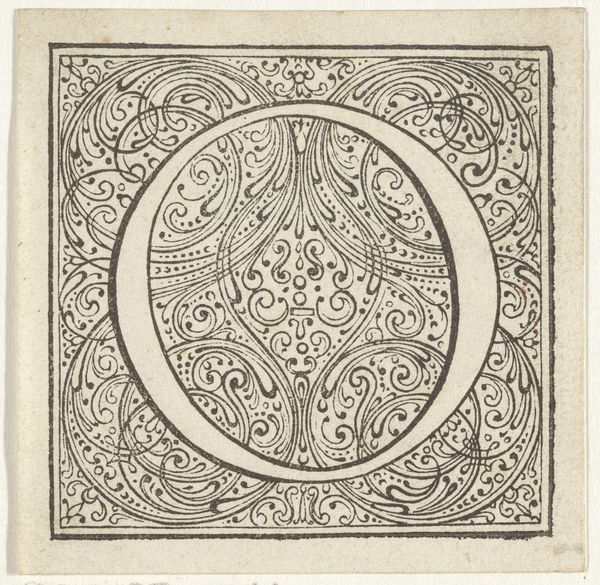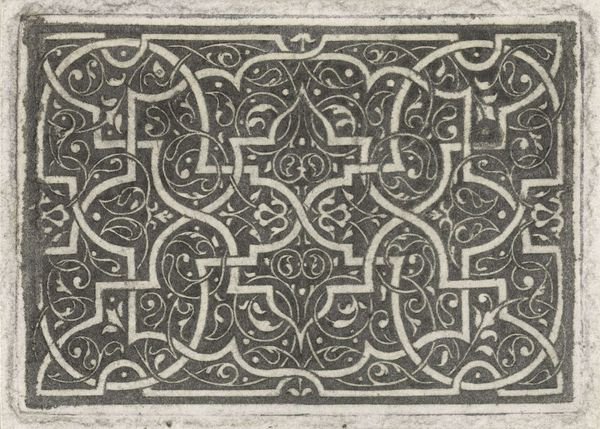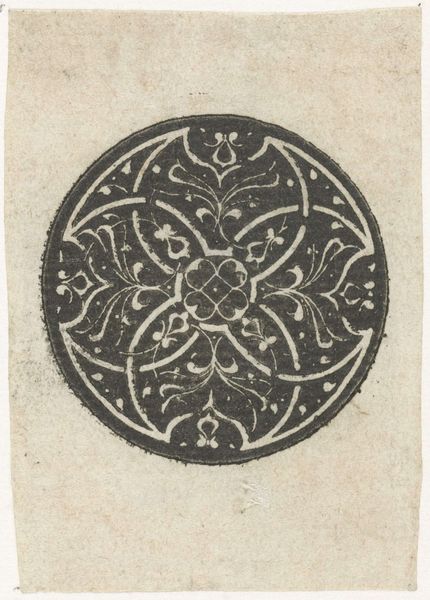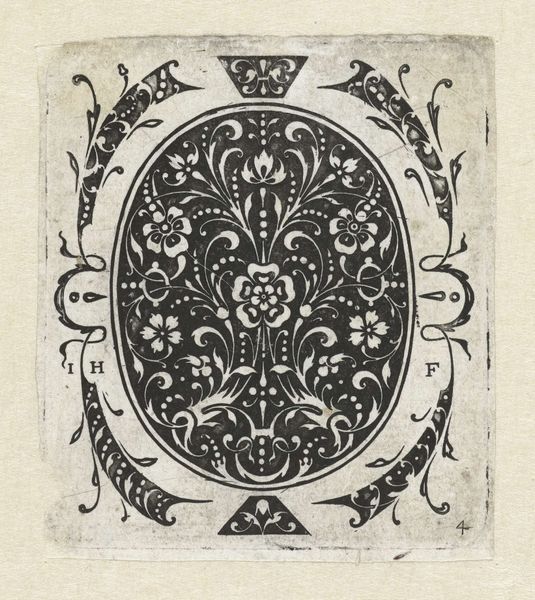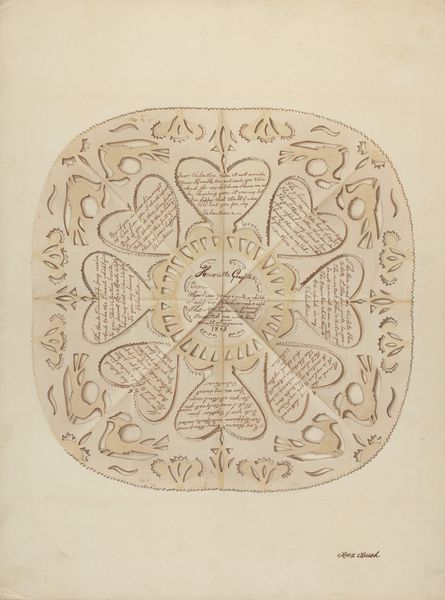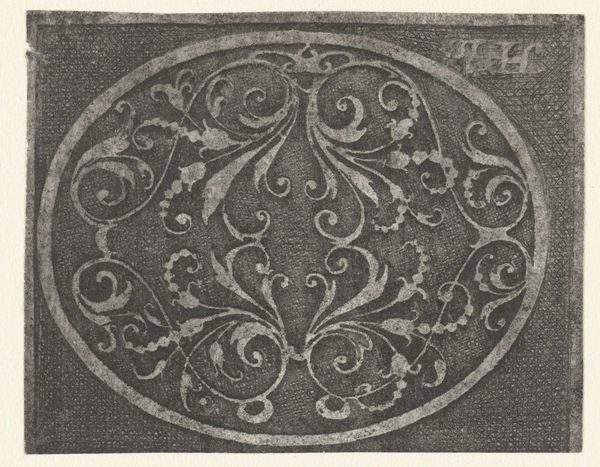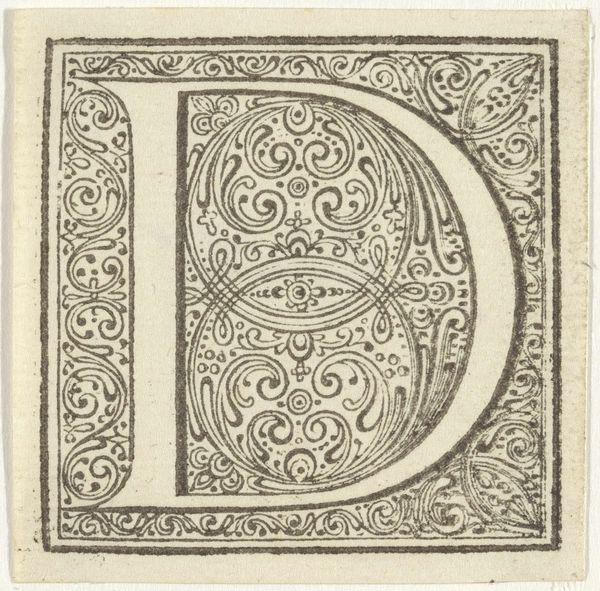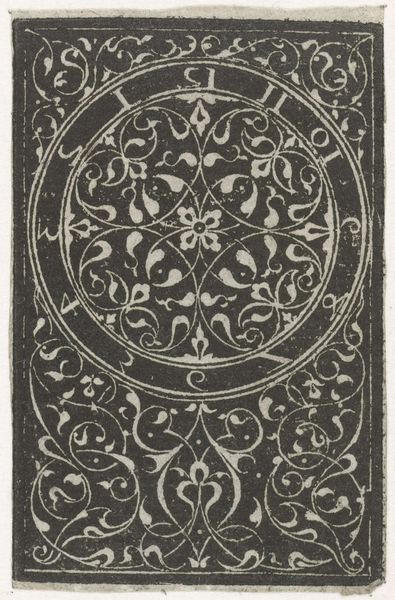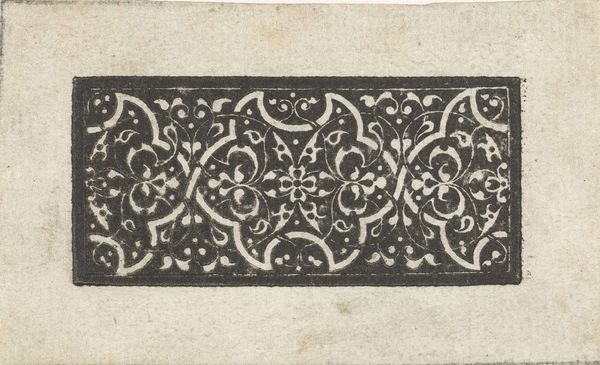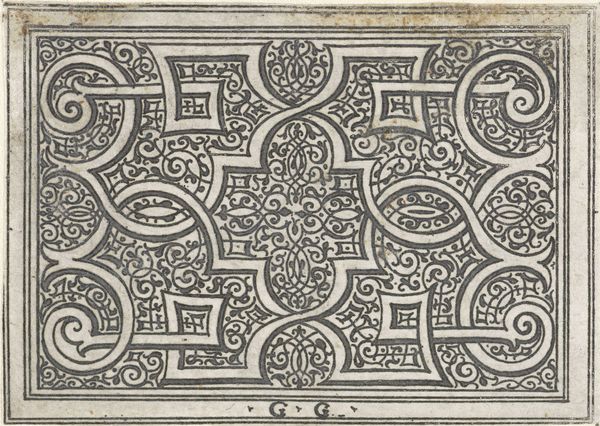
print, engraving
#
rippled sketch texture
#
aged paper
#
toned paper
# print
#
old engraving style
#
personal sketchbook
#
geometric
#
embossed
#
ink colored
#
abstraction
#
pen work
#
sketchbook drawing
#
islamic-art
#
engraving
#
dotted shading
Dimensions: height 37 mm, width 48 mm
Copyright: Rijks Museum: Open Domain
Curator: Here we have "Ovaal met witte moresken en arabesken op een zwart fond"—"Oval with white moresques and arabesques on a black background." It's an engraving by an anonymous artist, created sometime between 1516 and 1571. Editor: My first impression is that it resembles an elaborate emblem, constrained by its oval form. The stark black against the off-white paper heightens the sense of design. Curator: The patterns reflect the historical fluidity of artistic ideas, don’t they? We see Moorish and arabesque styles intermingling, hinting at cultural exchange across different societies and the symbol might have deep meanings attached to it. Editor: Yes, it is undoubtedly an intriguing synthesis! Notice the formal tension arising from the contrast of organic and geometric motifs; the curves of the arabesques play beautifully against the moresque’s straighter, angular lines. Semiotically, the interplay conveys a deeper harmony born of apparent opposition. Curator: I imagine viewers of the time recognizing immediately the symbolic power of intertwining these distinct stylistic features. Consider what it would mean in terms of status, spiritual aspiration, and maybe even social or political ambition to display a mastery of, and familiarity with, such rich symbology. Editor: Indeed, and if we consider the engraving as a work intended for pattern books, for example, the implications are far-reaching! The formal design provides a structure through which diverse cultural influences become tools. The stark lines could also be read as representative of clarity. Curator: Looking closer at these repetitive forms and flowing lines makes me think of the power that Islamic art found in abstraction—suggesting an infinite divine, transcending any simple visual representation. What seems to us a lovely pattern might have worked like a devotional object for a 16th century viewer, inspiring meditation. Editor: Ultimately, I believe the artwork demonstrates the power of simple materials combined with complexity. I admire the engraving, and also think it stands as evidence of its creator’s remarkable understanding of balance. Curator: This piece reminds us how styles transform as they cross cultural boundaries, constantly evolving and absorbing new symbolic meanings. Editor: Yes, and formal choices—line, shape, texture—guide how those symbolic meanings are communicated.
Comments
No comments
Be the first to comment and join the conversation on the ultimate creative platform.
